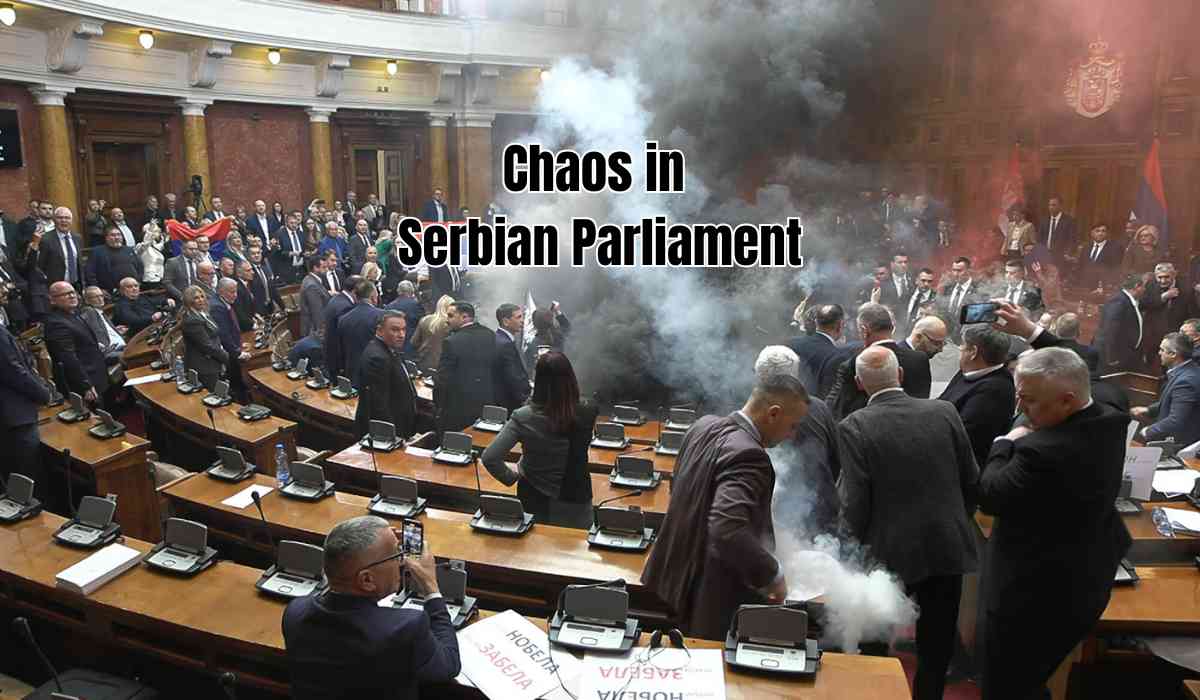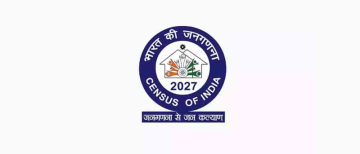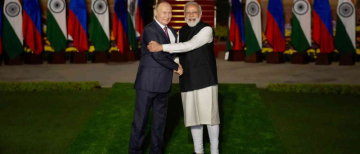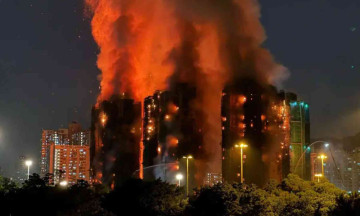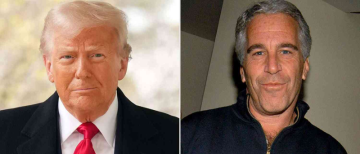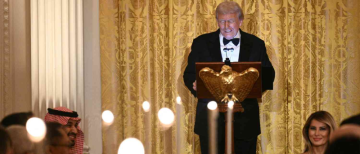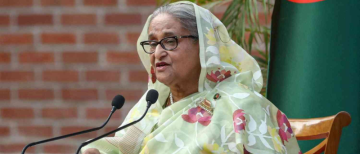Serbia witnessed dramatic scenes inside its parliament as opposition lawmakers resorted to throwing smoke bombs and tear gas during the spring session. The protest was a reaction to government corruption allegations following a fatal train station canopy collapse in November. The chaotic events underscored Serbia's deepening political crisis, driven by months of anti-corruption demonstrations.

What Happened in the Serbian Parliament?
As the parliamentary session commenced, opposition politicians stormed the chamber after the ruling Serbian Progressive Party (SNS) approved the agenda. The situation quickly escalated as lawmakers:
-
Threw smoke grenades and tear gas
-
Scuffled with security guards
-
Tossed eggs and water bottles
-
Used pepper spray inside the chamber
Live broadcasts showed thick clouds of black and pink smoke engulfing the parliament. Speaker Ana Brnabic confirmed that two lawmakers were injured, including Jasmina Obradovic of SNS, who suffered a stroke and was in critical condition.
Despite the disruption, ruling coalition members continued debates while opposition lawmakers blew whistles and displayed signs demanding justice for victims of the Novi Sad train station collapse. Meanwhile, hundreds of protesters outside parliament observed 15 minutes of silence in honor of the victims.
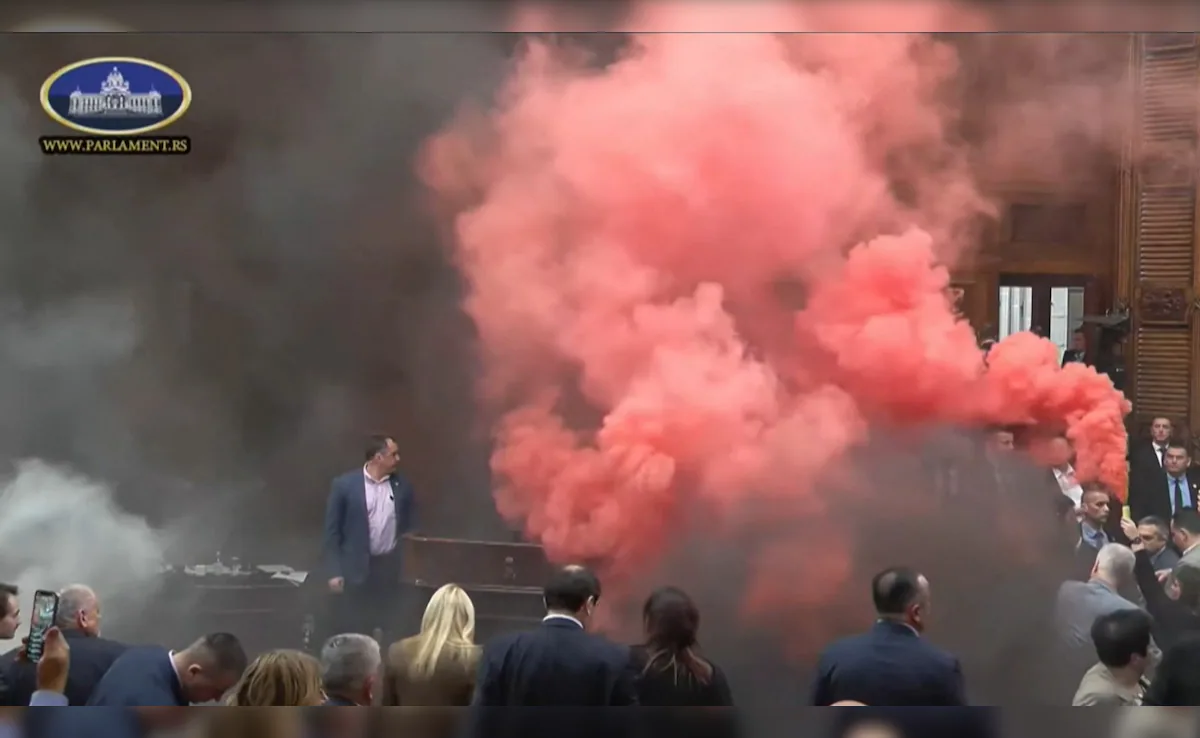
Why Did the Chaos Unfold?
The roots of the ongoing protests trace back to November 1, 2024, when the roof of a newly renovated train station in Novi Sad collapsed, killing 15 people and critically injuring two others. The tragedy ignited public outrage, with many blaming government corruption and mismanagement.
Key factors fueling the unrest
-
Public Outrage: The collapse reinforced growing dissatisfaction with alleged corruption and mismanagement.
-
Mass Protests: Students, teachers, farmers, and workers have joined nationwide demonstrations against the government.
-
Resignations: Prime Minister Milos Vucevic and two other ministers resigned in response to mounting pressure.
-
Government Actions: Authorities have charged 13 individuals linked to the train station tragedy.
Protesters have accused President Aleksandar Vucic’s administration of fostering a corrupt system that prioritizes political interests over public safety.
Legal Action and Government Response
Authorities have taken legal action, with 13 individuals facing charges related to the Novi Sad station collapse. In an attempt to pacify demonstrators, the government has:
-
Released some protesters who were arrested at rallies.
-
Made select documents on the station’s renovation public.
-
Increased funding for higher education.
-
Charged individuals suspected of harming protesters.
However, protesters remain unsatisfied and continue to demand:
-
More transparency in government dealings.
-
Additional funding for education.
-
Dismissal of legal charges against student protesters.
Opposition’s Stand
Opposition lawmakers argue that the government lacks legitimacy to pass new laws. Leftist leader Radomir Lazovic asserted that they were open to supporting the student-requested education bill but opposed other legislative decisions. Lazovic emphasized that a transitional government was necessary to ensure fair elections—an idea repeatedly rejected by the ruling SNS.
Chaos in the Serbian 🇷🇸 parliament this morning. pic.twitter.com/IQO3zpPQ3L— Based Serbia (@SerbiaBased) March 4, 2025
Government’s Stand: A Western Conspiracy?
The Serbian government has dismissed the protests as an orchestrated effort by Western intelligence agencies to destabilize the country. Officials claim that external forces are using student grievances as a tool to topple the administration.
-
Defense Minister Bratislav Gasic labeled the opposition MPs involved in the parliamentary disruption as a "disgrace to Serbia."
-
Speaker Ana Brnabic accused the lawmakers of "terrorism" and insisted that the Serbian parliament would not bow to pressure.
-
President Aleksandar Vucic has remained firm, rejecting calls for a transitional government.
Despite these allegations, opposition leaders maintain that their demands are solely focused on addressing government accountability and justice for the victims of the train station tragedy.
#Serbia 🇷🇸: another crazy day in the parliament as opposition lawmakers lit fireworks in protests of #Vucic's corrupt government. pic.twitter.com/gzGWMPQ9yc— Thomas van Linge (@ThomasVLinge) March 4, 2025
What’s Next?
Following the chaos, President Vucic vowed to hold all involved lawmakers accountable, labeling the incident as "hooliganism." Under Serbian law, parliamentary deputies enjoy immunity, but this could be revoked for serious crimes.
Key developments to watch:
-
Parliamentary session resumption: Scheduled for Wednesday to address pending legislative matters.
-
Legal action: Possible prosecution of opposition lawmakers involved in the fracas.
-
Upcoming protests: Protest leaders have called for a large rally in Belgrade on March 15.
-
Political implications: The crisis may further weaken the government’s standing and fuel demands for early elections.
The Serbian parliamentary chaos is a stark reflection of deep-seated political and social tensions in the country. The opposition’s dramatic protest highlights widespread frustration with corruption and governance failures. With ongoing demonstrations and heightened political divisions, Serbia stands at a critical juncture, facing either increased repression or meaningful reforms. The coming weeks will be pivotal in determining the nation’s political future.
With inputs from agencies
Image Source: Multiple agencies
© Copyright 2024. All Rights Reserved Powered by Vygr Media.

